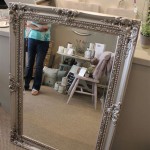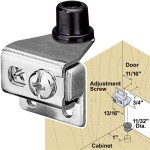Makeup Mirror Replacement Parts: A Comprehensive Guide
Makeup mirrors are indispensable tools for grooming and cosmetic application. They provide enhanced visibility, magnification, and often integrated lighting, allowing for precise detail work. However, like any frequently used appliance, these mirrors are subject to wear and tear. When components fail, the entire mirror becomes unusable unless appropriate replacement parts are sourced. Identifying the specific part required and understanding the factors influencing its selection are crucial for a successful repair.
This article provides a comprehensive overview of makeup mirror replacement parts, covering common components, potential failures, selection criteria, and troubleshooting tips. The objective is to equip individuals with the knowledge necessary to maintain and repair their makeup mirrors, extending their lifespan and avoiding the expense of complete replacement.
Common Makeup Mirror Components and Their Potential Failures
Makeup mirrors are constructed from various components, each playing a distinct role in their functionality. Understanding these components and their common failure modes is essential for accurate diagnosis and repair.
Mirror Glass: The primary component, responsible for reflection, is typically made from glass with a reflective coating. Damage can range from minor scratches and chips to complete shattering. Replacement glass must match the original in terms of size, shape, and reflective properties. Considerations include the type of glass (standard or low-iron for increased clarity), the thickness of the glass (affecting durability), and whether a magnified surface is required.
Lighting System: Many makeup mirrors incorporate integrated lighting, using either incandescent bulbs, fluorescent tubes, or, more commonly, LEDs. Bulbs burn out, fluorescent tubes can flicker or fail to ignite, and LEDs can experience individual diode failures or complete circuit board malfunctions. Replacement bulbs must match the voltage, wattage, and base type of the originals. LED strips or panels often require replacing the entire assembly. When replacing the lighting system, consider the color temperature (warm, neutral, or cool white) and brightness to ensure it matches the user's preference and provides optimal illumination for makeup application.
Power Supply: Makeup mirrors typically use a power supply to convert mains voltage to a lower voltage suitable for the lighting system and other electronic components. Power supplies can fail due to overload, voltage surges, or component degradation over time. Symptoms of a failing power supply include flickering lights, dim illumination, or complete lack of power. Replacement power supplies must match the voltage and current requirements of the mirror. Ensure the replacement power supply has the necessary safety certifications and complies with relevant electrical standards.
Switches and Controls: Switches and controls are used to turn the mirror on and off, adjust the brightness, and select different lighting modes. These components can fail due to mechanical wear, corrosion, or electrical short circuits. Replacement switches must match the original in terms of size, shape, and function. Rotary dials, push buttons, and touch sensors are common types of controls found on makeup mirrors. When replacing switches and controls, ensure they are compatible with the mirror's electrical circuitry.
Structural Components: The structural components of a makeup mirror include the frame, base, stand, and hinges. These components provide support and allow the mirror to be positioned as needed. Damage to these components can result from impacts, excessive force, or material fatigue. Replacement frames, bases, and stands must match the original in terms of size, shape, and material. Hinges can wear out over time, becoming loose or breaking. Replacement hinges must match the original in terms of size, mounting style, and load-bearing capacity.
Hardware: Screws, nuts, bolts, and other fasteners are used to hold the mirror together. These components can become loose, corroded, or stripped over time. Replacement hardware should match the original in terms of size, thread pitch, and material. Using the correct hardware is essential for ensuring the structural integrity of the mirror. Stainless steel hardware is recommended for its corrosion resistance.
Selecting the Correct Replacement Part
Identifying the correct replacement part is paramount to a successful repair. Several factors influence the selection process, including compatibility, quality, and availability.
Identification of the Existing Part: The first step is to accurately identify the existing part. If possible, examine the original part for any identifying markings, such as a part number, manufacturer's name, or model number. These markings can be used to search for a direct replacement. If the original part is damaged beyond recognition, consult the mirror's user manual or contact the manufacturer for assistance. In some cases, it may be necessary to compare the dimensions and specifications of the damaged part to those of available replacements.
Compatibility: Ensure the replacement part is compatible with the specific make and model of the makeup mirror. Incompatible parts can cause damage to the mirror or pose a safety hazard. Check the voltage, wattage, and other electrical specifications to ensure they match the requirements of the mirror. If replacing a structural component, verify that the dimensions and mounting style are compatible. Online retailers often provide compatibility charts or search filters to help identify compatible parts.
Quality: Opt for replacement parts of high quality to ensure durability and reliability. Lower-quality parts may fail prematurely, requiring frequent replacements. Consider purchasing parts from reputable manufacturers or suppliers with a proven track record. Read reviews and compare specifications to assess the quality of different replacement parts. Look for parts that are made from durable materials and have been tested to meet relevant safety standards.
Availability: The availability of replacement parts can vary depending on the age and model of the makeup mirror. Some parts may be readily available from online retailers or local hardware stores, while others may require special ordering or sourcing from the original manufacturer. Check the availability of the part before making a purchase to avoid delays in the repair process. Consider purchasing multiple units of commonly used parts to have them on hand for future repairs.
Warranty: Check the warranty offered by the manufacturer or supplier of the replacement part. A warranty provides protection against defects in materials or workmanship. If the replacement part fails within the warranty period, it can be repaired or replaced free of charge. Read the terms and conditions of the warranty carefully to understand the coverage and any limitations.
Troubleshooting Common Issues and Repair Procedures
Before replacing any parts, it is essential to troubleshoot the problem and determine the root cause. This can save time and money by avoiding unnecessary replacements. Several common issues and repair procedures are outlined below.
Lighting Problems: If the lighting system is not working, start by checking the power cord and power supply. Ensure the power cord is securely plugged into the outlet and that the power supply is providing the correct voltage. Use a multimeter to test the output voltage of the power supply. If the power supply is faulty, replace it with a compatible unit. If the power supply is working correctly, check the bulbs or LEDs. Replace any burnt-out bulbs or LEDs with new ones. If the lighting system still does not work, check the wiring and connections for any damage or loose connections. Repair or replace any damaged wiring. If the problem persists, the circuit board may be faulty and require replacement.
Switch Problems: If the switch is not working, test it with a multimeter to check for continuity. If the switch is faulty, replace it with a new one. Ensure the new switch is compatible with the mirror's electrical circuitry. Pay attention to the switch’s voltage and amperage ratings to ensure that they meet or exceed the original specifications. If the switch is difficult to operate, clean it with a contact cleaner to remove any dirt or debris. If the problem persists, the switch may need to be disassembled and lubricated.
Structural Damage: If the frame, base, or stand is damaged, repair it if possible. Use epoxy or other adhesives to repair cracks or breaks. If the damage is too severe, replace the damaged component with a new one. Ensure the new component is compatible with the mirror's design and dimensions. When replacing structural parts, carefully consider the weight-bearing capacity of the new part to ensure it provides adequate support. If hinges are loose or broken, replace them with new ones. Ensure the new hinges match the original in terms of size, mounting style, and load-bearing capacity.
Mirror Glass Replacement: Replacing the mirror glass requires careful handling to avoid further damage or injury. Wear gloves and safety glasses to protect yourself from broken glass. Carefully remove the old glass from the frame. Clean the frame thoroughly to remove any debris or adhesive residue. Apply a thin layer of adhesive to the frame and carefully position the new glass in place. Allow the adhesive to dry completely before handling the mirror. Ensure that the new glass is properly aligned and secured to prevent it from falling out.
Magnification Adjustment: Some makeup mirrors come with adjustable magnification. If the magnification mechanism is not working properly, inspect it for any damage or obstruction. Clean and lubricate the mechanism to ensure smooth operation. If the mechanism is broken or damaged, it may need to be replaced. If the magnification is not strong enough, consider replacing the mirror glass with one that has a higher magnification factor.
Safety Precautions: When working with electrical components, always disconnect the power cord from the outlet to avoid electric shock. Use insulated tools to prevent short circuits. Wear safety glasses to protect your eyes from debris. Follow all safety instructions provided by the manufacturer of the replacement parts. If you are not comfortable working with electrical components, consult a qualified electrician. Proper disposal of old or broken parts is also important. Electronic components should be recycled according to local regulations.

Zadro Mirrors Replacement Parts Adapter Bulb Hardware Other Page 2

Where Can I Purchase A Replacement 10x Detail Magnetic Mirror For My Sensor Pro Simplehuman
Dual Sided Vanity Mirror Cover Replacement Ifixit Repair Guide
Dual Sided Vanity Mirror Cover Replacement Ifixit Repair Guide

The 4 Best Lighted Makeup Mirrors Of 2024 Reviews By Wirecutter

Replacement Parts Fisher Laugh And Learn Magical Al Mirror Vanity
Conair Rechargeable Vanity Mirror Costco

Conair Led Lighted 1 5 In X 16 Tabletop Makeup Mirror Satin Nickle Finish Be401x The Home Depot

Zadro Lexington Led Light Makeup Mirror With Magnification Touch Pad

Homlux 36 In W X H Round Frameless Led Light With 3 Color And Anti Fog Wall Mounted Bathroom Vanity Mirror 27d7004792 The Home Depot








